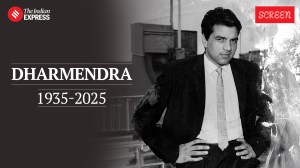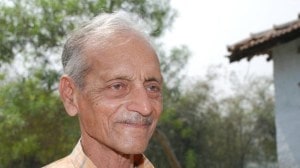Courts step in to save architecture colleges from HRD bulldozer
While IIMs suffer setbacks in their battle on autonomy, architects have with the help of the judiciary repelled three different attacks on t...

While IIMs suffer setbacks in their battle on autonomy, architects have with the help of the judiciary repelled three different attacks on their turf from HRD Minister Murli Manohar Joshi—attacks almost identical to the one launched against the IIMs.
Just a day before the IIM case comes up in the Supreme Court today, three architects secured a stay from the Delhi High Court thwarting Joshi’s bid to take over their alma mater, the Delhi-based School of Planning and Architecture (SPA), the highest-rated architecture college in the country.
The Delhi High Court’s intervention on a petition seeking to protect the SPA’s autonomy follows a succession of interim orders passed against the Government in other architecture education-related cases by the Madras High Court. All those orders came in recent months at the instance of an independent architects body, Indian Institute of Architects (IIA).
n On March 15, 2004, the Madras High Court stayed the HRD Ministry’s directive that the All India Council for Technical Education (AICTE), which is run entirely by Government appointees, will hereafter regulate architecture education, taking over that function from another statutory body, Council of Architecture (CoA), which is run entirely by elected representatives of architects.
• In the same case, the Madras High Court had on December 15, 2003 stayed the public notice issued earlier the AICTE announcing its take over of architecture education.
• As the AICTE continued to interfere with
architecture education despite the December 15 stay order, the Madras High Court admitted a contempt petition on February 26, 2004 and summoned its chairman to appear in person.
• On November 20, 2003, the Madras High Court restrained the Central Board for Secondary Education (CBSE) and the HRD Ministry from lowering the eligibility criteria for admissions to architecture colleges from 50% to 35% marks.
Interestingly, the latest case, which concerns SPA in Delhi, bears striking parallels to the issues thrown up by the IIM controversy.
•Joshi has sought to justify his sudden fee-cut decision by claiming that the memorandum of association (MoA) of each of the IIMs empowers the Centre to act unilaterally. He repeatedly advised the IIMs in public to abide by the MoA.
But the MoA of SPA, evidently, did not hold such sanctity in his eyes. For, as the petitioners in the Delhi High Court alleged, Joshi effected changes in the MOA so as to increase the Government’s control over the ‘‘autonomous’’ institution. He reduced the strength of SPA’s general council and increased the proportion of the Government representatives.
•Despite his solemn assurances in the IIM case to make good the revenue deficit caused by the fee cut, Joshi browbeat SPA by not releasing funds for almost nine months last year till the college exhausted all its reserves and surrendered to the Ministry’s diktats on the MoA and other issues.
As regards the IIMs, Joshi has shown similar aversion to their corpus which helped them reduce their dependence on Government grants.
• Joshi appointed former CAG V K Shunglu last year to probe ‘‘financial irregularities’’ in SPA. He chose the same man to head the committee that will study the financial requirements of the IIMs after the fee-cut. Joshi has made allegations of financial irregularities against the IIMs as well.




- 01
- 02
- 03
- 04
- 05



























